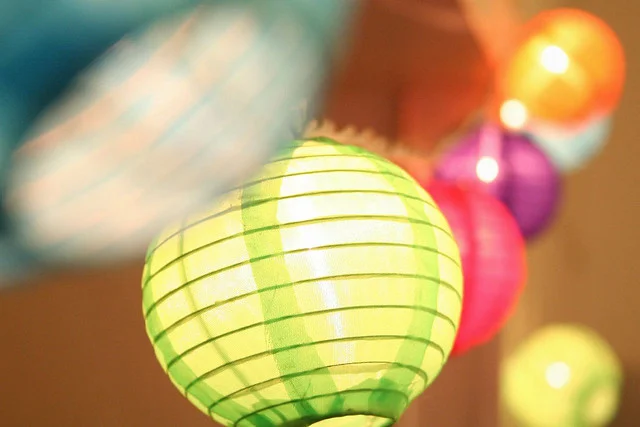It’s the equinox as I write this, and I’m caught up in the way this moment in Southern California tips us into full bloom. Last night I walked through a friend’s front yard while he gave me a tour of the “orchard” set against two side fences. It was a scattering of trees, some mere twigs dotted with blossoms, one already heavy with grapefruit that reflected back gold in the flashlight’s beam. “That’s a pomegranate, and this is a peach,” the friend said, pointing to a couple of newly planted sticks (to use the fancy horticultural term). A few weeks ago, there was nothing to see. Just bare wood too slight to hold up the word “trunk,” and a few twig-like branches. But something happened, a swelling of buds and petals and scent. We knew it would come. And with luck and cultivation, we’ll see the pomegranates and lemons and first-year peaches later on, too.
Those predictable rhythms don't hold for people and pages, though it would be handy if they did. What we see, sometimes for long periods, are fragile-looking twigs stuck in the ground. They’re the projects we tuck into stray spaces and build from the words left at the end of long days of trading our energy and imaginations for money.Time passes, sometimes a lot of time, before what we have looks like much, or we notice the nubs of buds on what we feared might stay dormant for good. At our best, we persist, staying in conversation with the work, pushing it, then letting it lead us.
George Saunders, talking to a stalled story
In L.A. last month, the fiction writer George Saunders mentioned just that process.
Once, while waiting for a bus across the street from the barber shop in his town, he decided to take on the barber.
“He was one of these guys who checks women out fearlessly—and even after they bust him he keeps looking,” Saunders remembered. “We had just had two daughters, so I was a new feminist and I thought, ‘What an irritating [jerk].’ My first idea was, ‘I don’t know what I’m gonna write, but I’m gonna nail that guy. So I did.
“I wrote what I really thought was some fun inhabiting of this perverted guy…. I did that for about a year, and I had some pretty funny bits, but the story stalled, and I think it was because I knew too much about him. I was going to crucify this idiot. That was my plan.
“The story said, ‘All right, go ahead, but you’re not gonna be interesting doing that. So at some point about a year into it I went, ‘You know what? I’ve gotta somehow make this guy more sympathetic because as this story stands, it’s just kicking him. So then it’s the magic moment when you go, okay, how do I make this [jerk] more interesting?
“Well… Hmm…. And then you start titrating in bits of yourself, which you were already doing, but now you’re being a little more sympathetic. Not being the most subtle writer, I said, ‘Oh yeah, he doesn’t have any toes!’ That was my way of doing it. But that did the trick … and suddenly it came alive. So I didn’t know that I was out to humanize him, but the story teaches you that. The story’s very stubborn. And it will say, 'Go ahead, write as much as you like, but I’m not movin’ until you show a little sympathy.' And that can happen again and again.”
‘A year later…’
There’s so much to love in how the process evolved, from the original mission (“I’m gonna crucify that guy”) to the more complex (and toeless) version the story wanted. I’m sure Saunders says that often his students: “The story teaches you.”
What struck me most, though, were the toss-away words: “I did that for about a year….” He repeats them, too. “So at some point about a year into it….”
The process can—and often does—look like that: chipping away, experimenting and keeping the conversation with your work going for weeks and months and years.
That doesn’t happen when you simply put the manuscript away and “think about it,” which usually means “wade through guilt, bemoan not having time to work on it or feel flattened by the soul-crushing, 5,000-pound boulder it’s become.”
It doesn’t happen either when you keep ideas locked in your head without making a move to get them on paper where you can start the exchange, however slow, that will move you forward and bring blooms to those awkward little sticks.
Time to amp up the conversation, don’t you think?
One writer I know felt dogged for more than a year by stories she wanted to write. When we talked about them, and she gave herself some “getting reacquainted” sessions to feel her way into the work, she realized that she was actually excited about an entirely different project. And she wouldn’t have known unless she sat down to reach toward the vague shapes in her imagination and pull them into the light.
My guess is that she just would’ve stayed frustrated and blocked and cringing whenever anyone said, “So how’s that writing going?”
The speed of the work you do isn’t important, but the constant conversation and tending are.It’s spring, beautiful writer person—such a fertile time. Feed your work. Talk to it and consider what it wants. Do a small writing practice daily. And as always, let me know if I can help.
(If you want to revisit the George Saunders story in context, you can hear it here, courtesy of the wonderful Aloud program at the Los Angeles Central Library. The photo of blossoms above is by Sterlic, via Flickr.)

